Publications so far
0
| 1. | 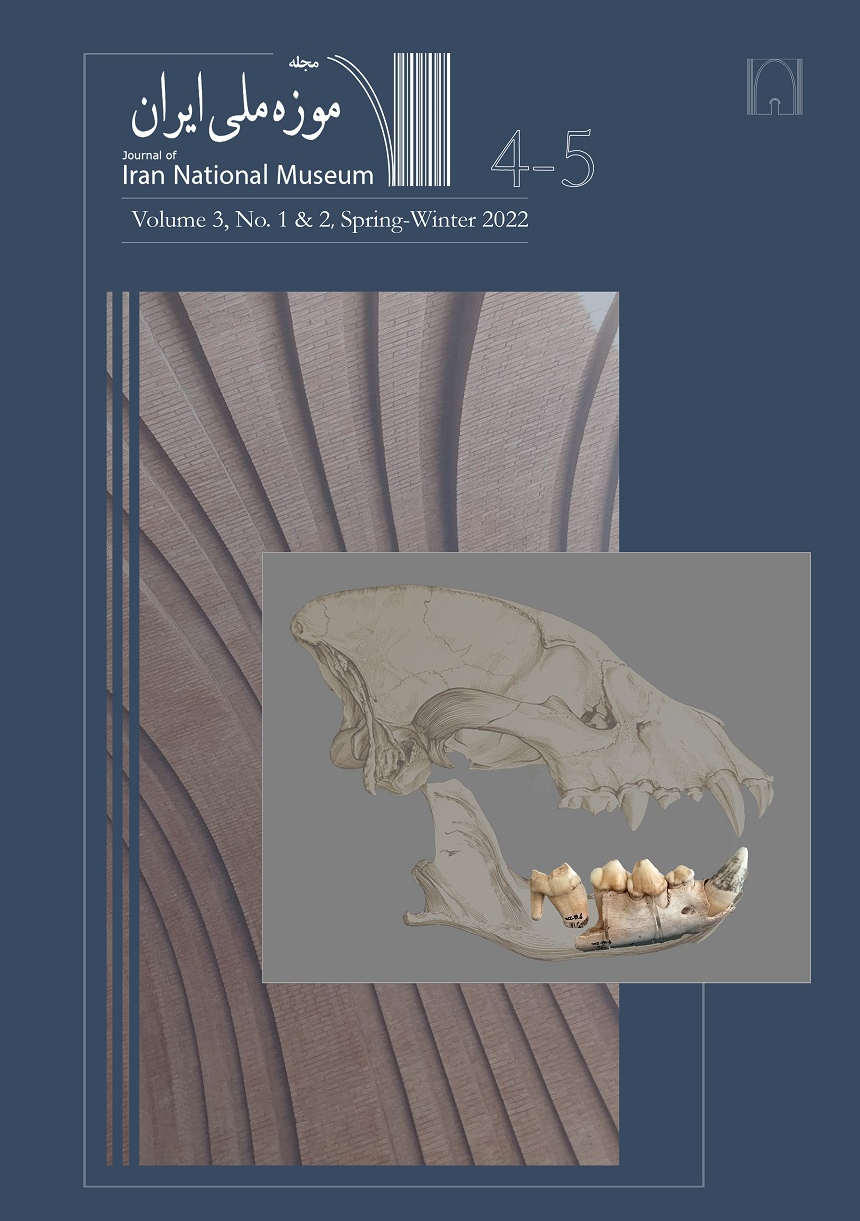 | Ohrstrom, Lena; Kashani, Natascha Bagherpour; Seilera, Roger; Bode, Beata; Aali, Abolfazl; Soltani, Sara Khalifeh; Shirani, Shapour; Ruß-Popa, Gabriela; Stöllner, Thomas; Rühli, Frank: Paleopathological assessment of the ancient Iranian salt mummies #1, #7 and #X, Chehrābād salt mine of Douzlākh, Iran. In: Journal of Iran National Museum, vol. 3, iss. 1, no. 4, pp. 181-188, 2025. (Type: Journal Article | Abstract | Links | BibTeX)@article{nokey,A paleopathological assessment of the ancient human remains from the Salt mine of Douzlakh, which are kept in the National museum in Tehran, Iran. The ancient human remains were investigated by Computed Tomography (CT) as well as by histology. Molecular analyses are still ongoing. The analyses showed that the tissues have been very well conserved in the natural salt. Traumatic lesions can be identified by CT, as a result of the massive force which was put on the individuals during the collapses of the mine. |
| 2. | 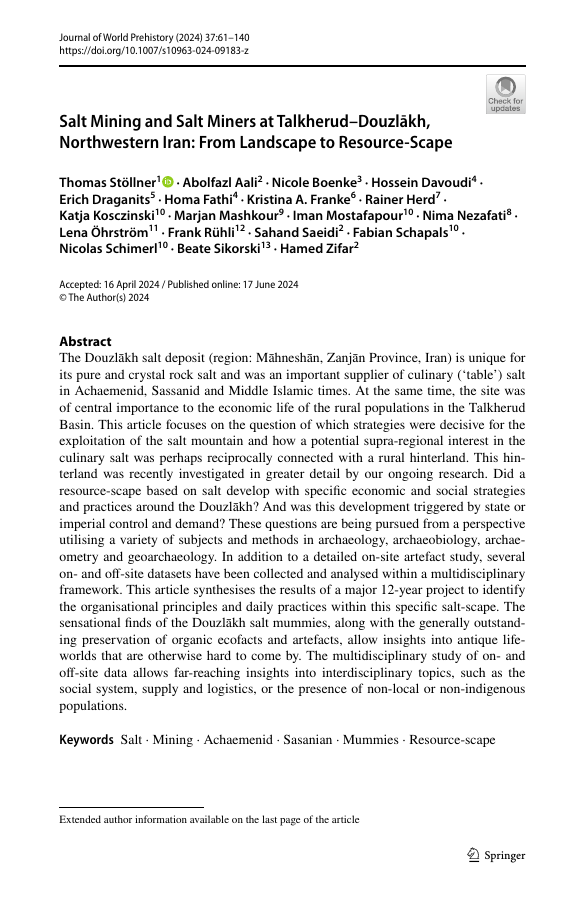 | Stöllner, Thomas; Aali, Abolfazl; Boenke, Nicole; Davoudi, Hossein; Draganits, Erich; Fathi, Homa; Franke, Kristina A.; Herd, Rainer; Kosczinski, Katja; Mashkour, Marjan; Mostafapour, Iman; Nezafati, Nima; Öhrström, Lena Maria; Rühli, Frank; Saeidi, Sahand; Schapals, Fabian; Schimerl, Nicolas; Sikorski, Beate; Zifar, Hamed: Salt Mining and Salt Miners at Talkherud–Douzlākh, Northwestern Iran: From Landscape to Resource‑Scape. In: Journal of World Prehistory, vol. 37, pp. 61-140, 2024. (Type: Journal Article | Abstract | Links | BibTeX)@article{nokey,The Douzlākh salt deposit (region: Māhneshān, Zanjān Province, Iran) is unique for its pure and crystal rock salt and was an important supplier of culinary (‘table’) salt in Achaemenid, Sassanid and Middle Islamic times. At the same time, the site was of central importance to the economic life of the rural populations in the Talkherud Basin. This article focuses on the question of which strategies were decisive for the exploitation of the salt mountain and how a potential supra-regional interest in the culinary salt was perhaps reciprocally connected with a rural hinterland. This hinterland was recently investigated in greater detail by our ongoing research. Did aresource-scape based on salt develop with specific economic and social strategies and practices around the Douzlākh? And was this development triggered by state or imperial control and demand? These questions are being pursued from a perspective utilising a variety of subjects and methods in archaeology, archaeobiology, archaeometry and geoarchaeology. In addition to a detailed on-site artefact study, several on- and off-site datasets have been collected and analysed within a multidisciplinary framework. This article synthesises the results of a major 12-year project to identify the organisational principles and daily practices within this specific salt-scape. The sensational finds of the Douzlākh salt mummies, along with the generally outstanding preservation of organic ecofacts and artefacts, allow insights into antique life-worlds that are otherwise hard to come by. The multidisciplinary study of on- and off-site data allows far-reaching insights into interdisciplinary topics, such as the social system, supply and logistics, or the presence of non-local or non-indigenous populations. |
| 3. | 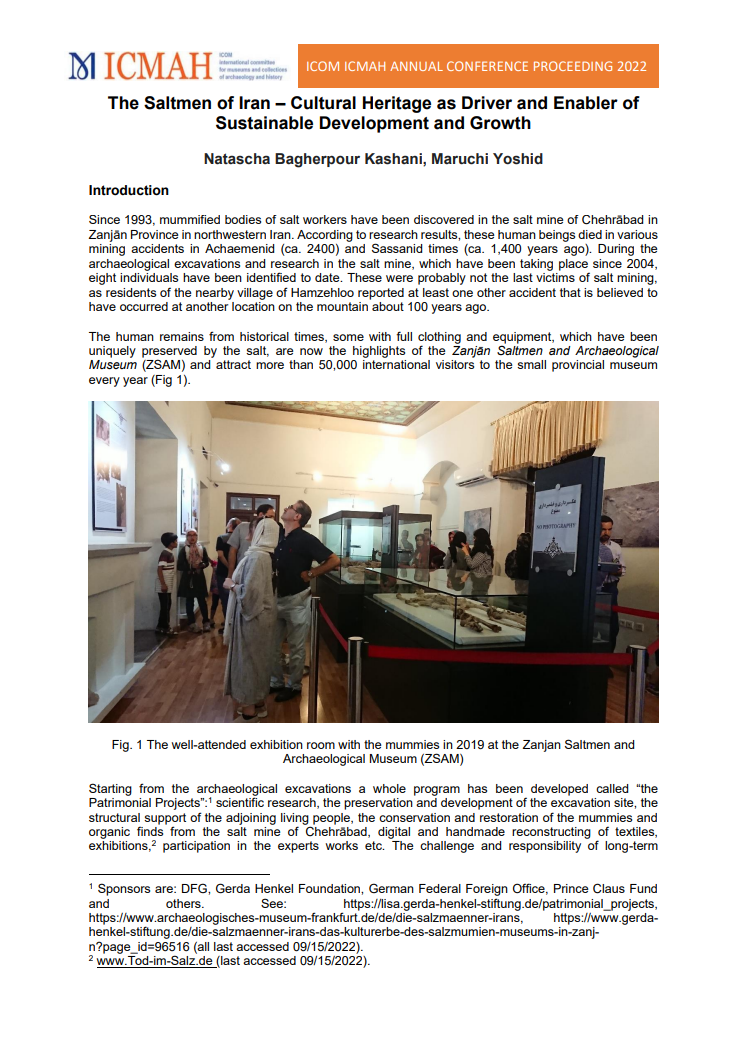 | The Saltmen of Iran – Cultural Heritage as Driver and Enabler of Sustainable Development and Growth. In: Forthcoming. (Type: Proceedings Article | Links | BibTeX)@inproceedings{nokey, |
| 4. |  | Stöllner, Thomas; Aali, Abolfazl: Einblicke in eine Katastrophe. Das Salzbergwerk von Douzlākh bei Chehrābād. In: Karlsruhe, Badisches Landesmuseum (Ed.): vol. Die Perser. Am Hof der Großkönige, pp. 116-20, WBG/Philipp von Zabern, Darmstadt, 2021, ISBN: ISBN 978-3-8053-5276-5. (Type: Book Chapter | Links | BibTeX)@inbook{nokey, |
| 5. |  | Rossi, Conor; Ruß-Popa, Gabriela; Mattiangeli, Valeria; McDaid, Fionnuala; Hare, Andrew J.; Davoudi, Hossein; Laleh, Haeedeh; Lorzadeh, Zahra; Khazaeli, Roya; Fathi, Homa; Teasdale, Matthew D.; Aali, Abolfazl; Stöllner, Thomas; Mashkour, Marjan; Daly, Kevin G.: Exceptional Ancient DNA Preservation and Fibre Remains of a Sasanian Saltmine Sheep Mummy in ChehrāBāD, Iran. In: Biological letters, iss. 17, 2021. (Type: Journal Article | Abstract | Links | BibTeX)@article{nokey,Mummified remains have long attracted interest as a potential source of ancient DNA. However, mummification is a rare process that requires an anhydrous environment to rapidly dehydrate and preserve tissue before complete decomposition occurs. We present the whole-genome sequences (3.94 X) of an approximately 1600-year-old naturally mummified sheep recovered from Chehrābād, a salt mine in northwestern Iran. Comparative analyses of published ancient sequences revealed the remarkable DNA integrity of this mummy. Hallmarks of postmortem damage, fragmentation and hydrolytic deamination are substantially reduced, likely owing to the high salinity of this taphonomic environment. Metagenomic analyses reflect the profound influence of high-salt content on decomposition; its microbial profile is predominated by halophilic archaea and bacteria, possibly contributing to the remarkable preservation of the sample. Applying population genomic analyses, we find clustering of this sheep with Southwest Asian modern breeds, suggesting ancestry continuity. Genotyping of a locus influencing the woolly phenotype showed the presence of an ancestral ‘hairy’ allele, consistent with hair fibre imaging. This, along with derived alleles associated with the fat-tail phenotype, provides genetic evidence that Sasanian-period Iranians maintained specialized sheep flocks for different uses, with the ‘hairy’, ‘fat-tailed’-genotyped sheep likely kept by the rural community of Chehrābād's miners. |
| 6. |  | Stöllner, Thomas; Aali, Abolfazl: Long-Term Salt Mining in Chehrābād: Resilient Strategies in Accessing Mineral Resources at the Iranian Highlands. In: Pearls, Politics and Pistachios: Essays in Anthropology and Memories on the Occasion of Susan Pollock’s 65th Birthday, pp. 352-369, Ex Oriente/Propylaeum, Berlin/Heidelberg, 2021. (Type: Book Chapter | Links | BibTeX)@inbook{nokey, |
| 7. | 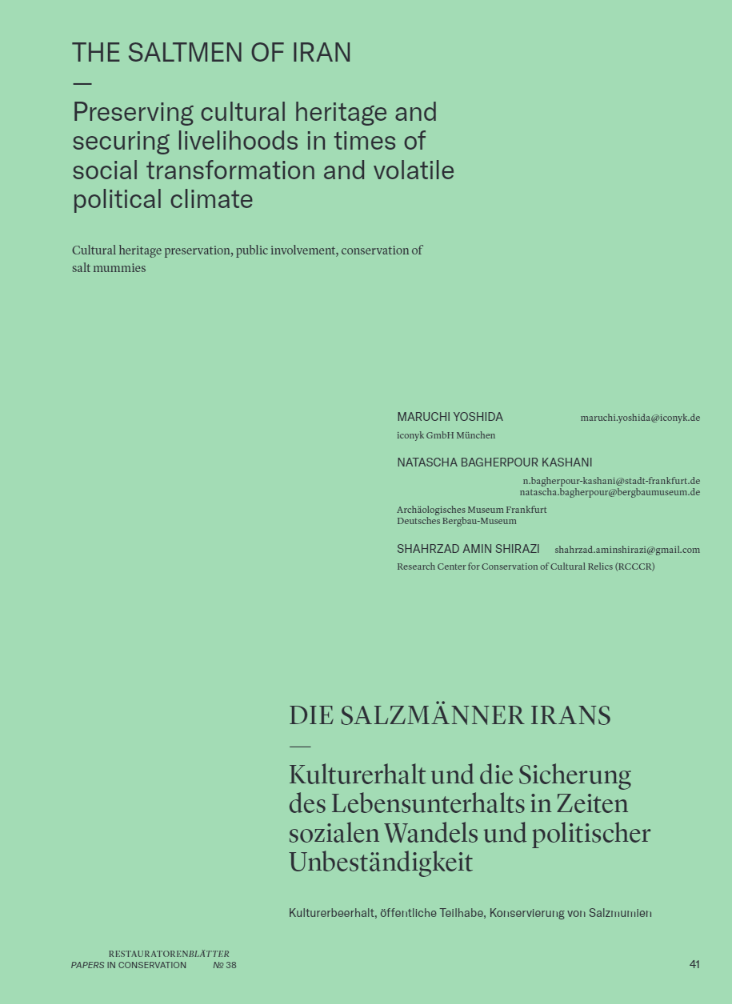 | Kashani, Natascha Bagherpour; Shirazi, Shahrzad Amin; Yoshida, Maruchi: The Saltmen of Iran – Preserving Cultural Heritage and Securing Livelihoods in Times of Social Transformation and Volatile Political Climate. In: Papers in Conservation , vol. 38, pp. 41-58, 2021. (Type: Journal Article | Abstract | Links | BibTeX)@article{nokey,After an initial chance find in 1993, research excavations in the ancient salt mine of Chehrābād (Zanjan Province, Iran) unearthed several salt mummies and organic finds of textile and leather, as well as tools and ceramic vessels. The finds predominantly date to the Achaemenid (550–330 BCE) and Sassanid periods (224–642 CE). The organic substances preserved by the salt contain valuable information that contributes to the understanding of the living environment of these periods and to the reconstruction of social structures of past societies. The salt mine in Chehrābād and the finds displayed in the museum of the provincial capital Zanjan are an important cultural heritage whose preservation is understood as a joint task of the local population, the province and the central cultural authority. The Iranian-German projects dealing with the salt mummies of Iran are concerned, on the one hand, with developing sustainable conservation concepts for the salt mine and the collection in the museum that are adapted to local conditions. On the other hand, incentives are created for the local population to participate in the preservation of the cultural heritage. |
| 8. | 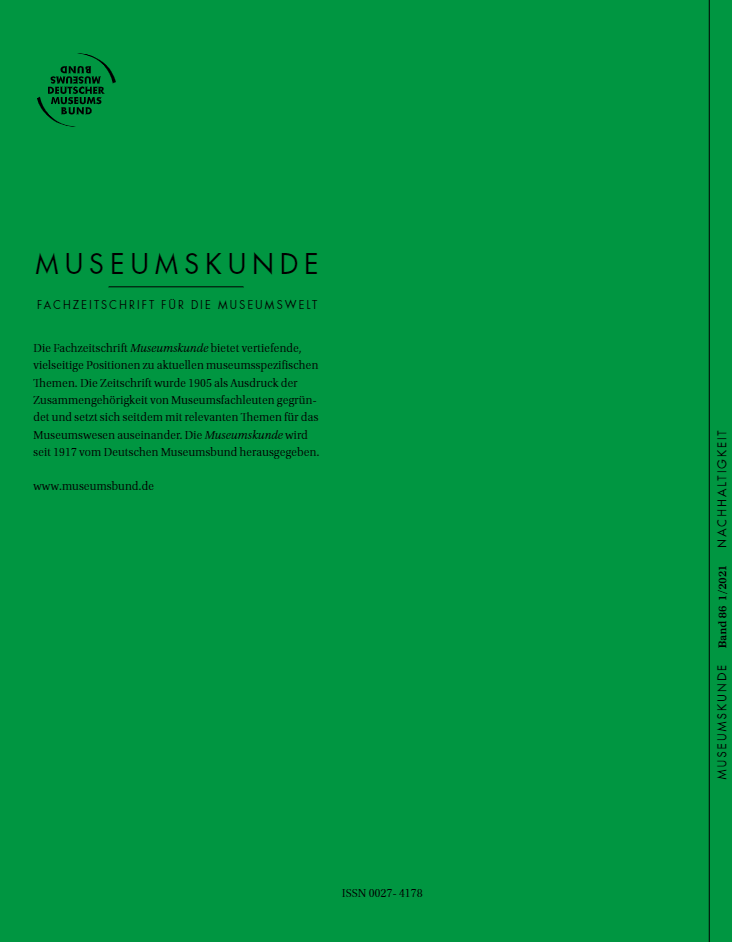 | Kashani, Natascha Bagherpour; Yoshida, Maruchi; Stöllner, Thomas: Die Salzmänner von Iran. Kulturerhalt als Treiber und Ermöglicher einer nachhaltigen Entwicklung. In: Museumskunde, Fachzeitschrift für die Museumswelt, vol. 1, pp. 34-42, 2021. (Type: Journal Article | Abstract | Links | BibTeX)@article{nokey,Museumsarbeit und Kulturerbeerhalt können zur Erreichung der in der Agenda 2030 festgeschriebenen Ziele für nachhaltige Entwicklung beitragen. Die Herausforderung, Museen ökologisch und sozial zu gestalten oder Museen als kulturelle und nachhaltige Bildungsorte zu etablieren, ist in Ländern, wie in unserem Beispiel Iran, umso größer, je mehr eine Gesellschaft unter sozialen Spannungen und wirtschaftlichen Sanktionen zu leiden hat. Mit den laufenden Projekten verfolgt das Autor*innen-Team das Ziel, die Partnermuseen und deren Trägerbehörden in Iran dabei zu unterstützen, einen wirksamen Beitrag zur menschlichen und sozioökonomischen Entwicklung, zu hochwertiger Bildung und sozialer Inklusion, zur ökologischen Nachhaltigkeit und zu friedlichen Gesellschaften zu leisten. |
| 9. | 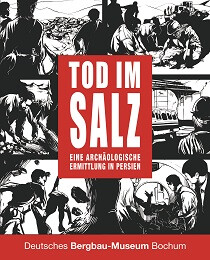 | Stöllner, Thomas; Aali, Abolfazl; Kashani, Natascha Bagherpour (Ed.): Tod im Salz. Eine archäologische Ermittlung in Persien. Nünnerich-Asmus Verlag & Media GmbH, 2020, ISBN: 978-3-96176-141-8. (Type: Book | Abstract | Links | BibTeX)@book{nokey,Since the first discoveries in 1993 bodies or body-parts of eight humans have been discovered at the salt-mine of Douzlākh at Chehrābād. These bodies allow a reconstruction of their lives as workers during the different operation periods. By involving many different scientific fields, it became possible to investigate their palaeo-medical aspects, their diet and their health status as well the causes of their death and their involvement into different aspects of the mining operation and logistics of the mine. It is possible not only to reconstruct three different catastrophes during the Achaemenid, the early and the late Sasanian times but also to understand the social aspects of the working people. The Achaemenid miners certainly came from abroad but already stayed a while in the region, apart from the young miner no. 4 who seems to have arrived shortly before the catastrophe. This group of migrants possibly were sent within a “bandaka”, an Achaemenid labour duty. The Sassanian miners partly came from a “regional” background but also came shortly before their deaths. Saltman 1 is interesting as he is an older individual who possibly had a special role within the miners. Mining at Douzlakh was predominantly operated in periods of strong centralized political systems when governmental activities could be organized over longer distances. |
| 10. | 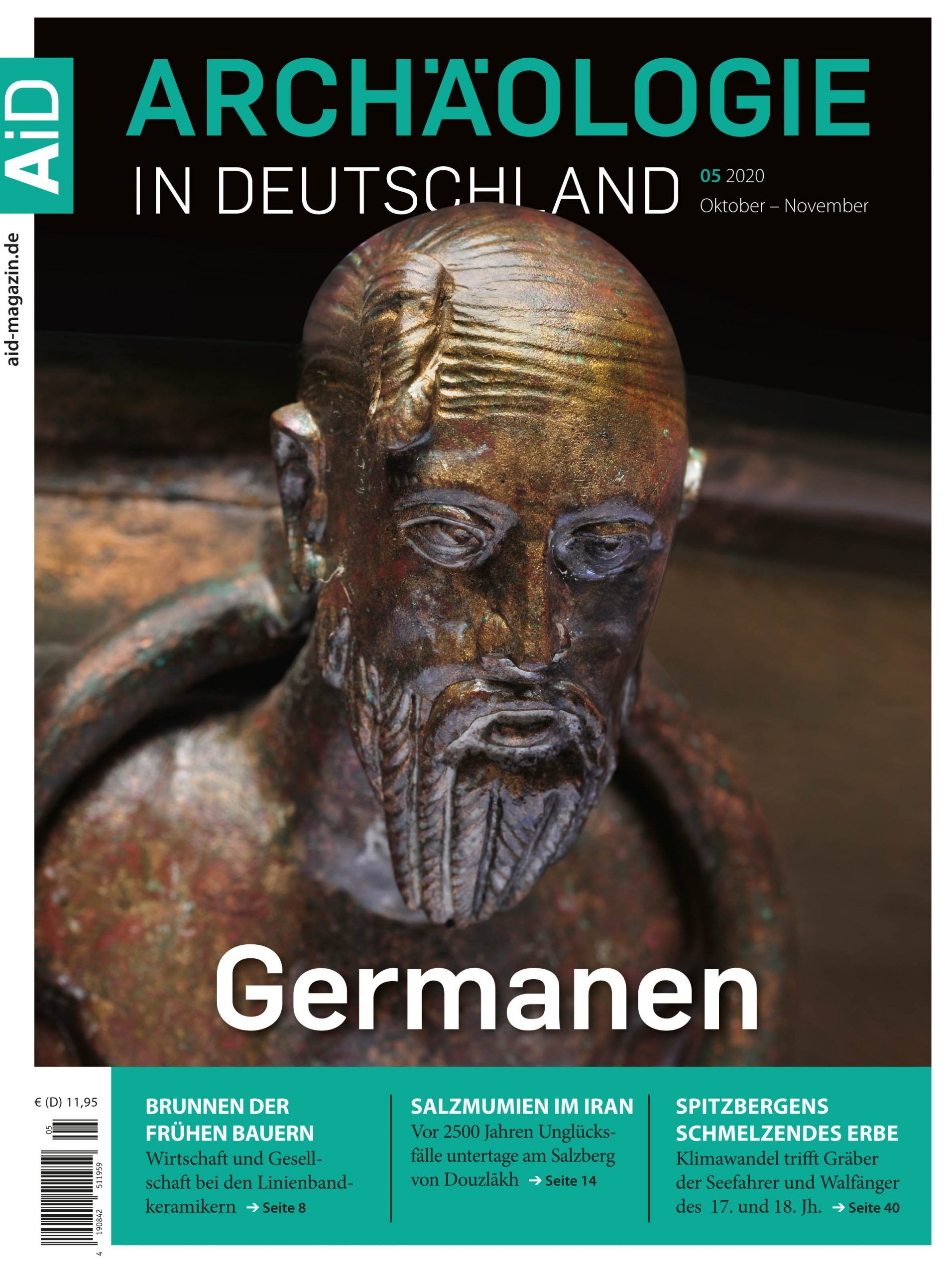 | Stöllner, Thomas: Salzmumien im Iran. In: Archäologie in Deutschland, vol. 5/2020, pp. 14-19, 2020. (Type: Journal Article | Abstract | Links | BibTeX)@article{nokey,Salz ist unverzichtbar: als Mittel zur Konservierung in der Vergangenheit in noch weit höherem Maße als heute. Von der Bedeutung des weißen Goldes zeugen in unseren Breiten berühmte Fundorte wie Hallstatt und Hallein. Im Nordwesten Persiens liegen die Bergwerke von Douzlākh. Dort hat das Salz verunglückte Bergmänner konserviert: eine Momentaufnahme vom Todeskampf untertage. |
| 11. | 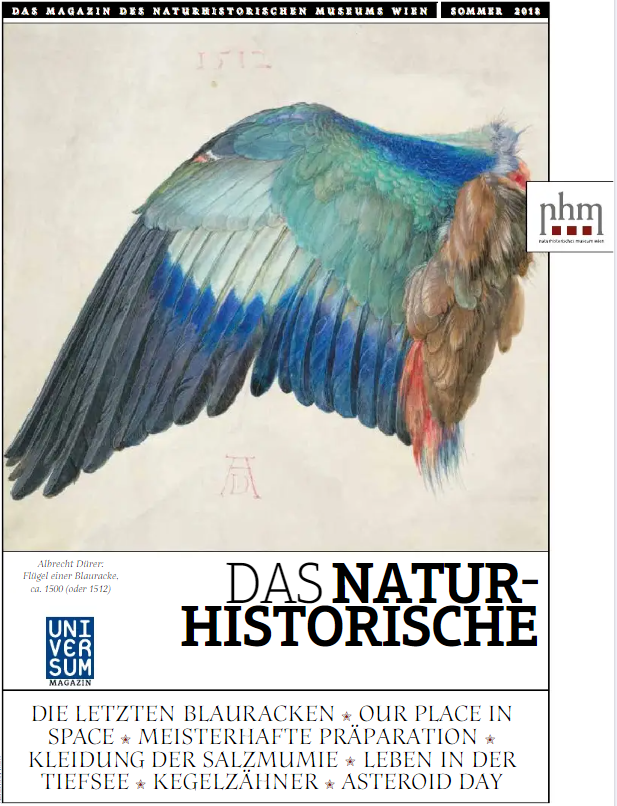 | Grömer, Karina; Aali, Abolfazl; Stöllner, Thomas; Ruß-Popa, Gabriela; Kashani, Natascha Bagherpour: Kleidungs- und Textilgeschichte aus dem Salz. Forschungen im Salzbergwerk Chehrabad, Iran. In: UNIVERSUM Magazin, pp. 10-12, 2018. (Type: Journal Article | Links | BibTeX)@article{nokey, |
| 12. | 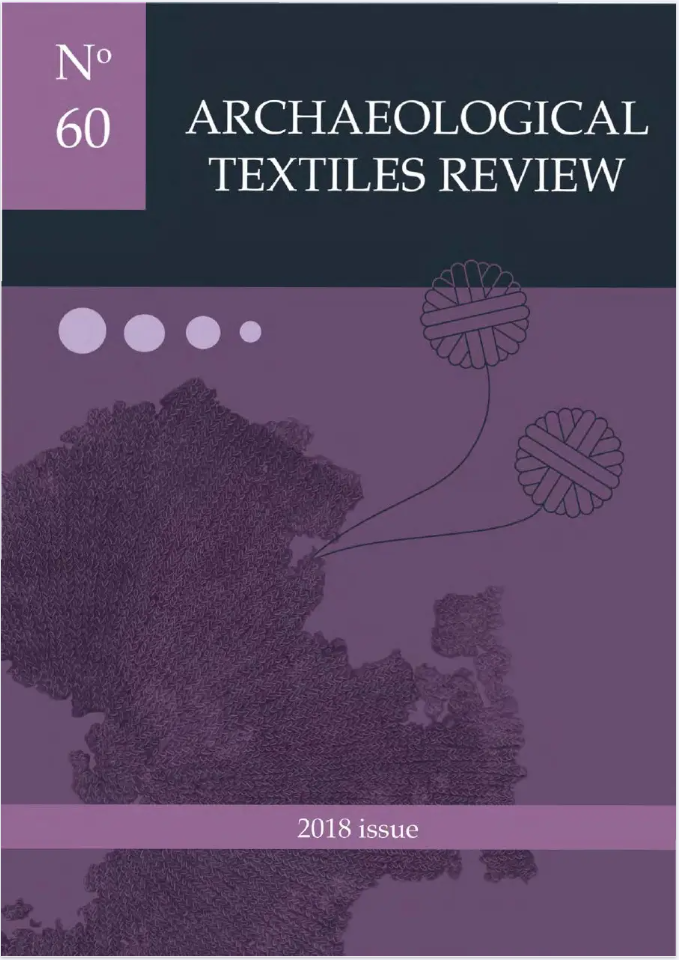 | Grömer, Karina; Kashani, Natascha Bagherpour: The Saltmummies of Zanjan. Textile Research in Iran in a Conservation and exhibition project. In: Archaeological Textiles Review, vol. 60, pp. 110-113, 2018. (Type: Journal Article | Links | BibTeX)@article{nokey, |
| 13. | Aali, Abolfazl; Stöllner, Thomas; Abar, Aydin; Rüli, Frank: The Salt Men of Iran: The salt mine of Douzlakh, Chehrabad. In: Archäologisches Korrespondenzblatt , iss. 42, no. 1, pp. 61-81, 2012. (Type: Journal Article | Abstract | Links | BibTeX)@article{nokey,During 2004, 2005, and 2010 scientific excavations took place at the salt mine of Chehrābād. According to the work conducted and further scientific investigations, the beginning of salt exploitation dates to the mid-first millennium BC. Some indications possibly hint to mining activities during the Late Arsacid period. Salt extraction certainly was taken up again during the Sassanian period and might have continued up to the Early Islamic period. The extraction was carried out as a chamber-pillar mining; no wooden props have been found so far, although the mummified bodies of mine workers and the context bear ample witness of instabilities and mining catastrophes. The first two campaigns were conducted by the Iranian Cultural Heritage Organization/Miras Farhangi under the auspices of Abolfazl Aali. The excavation in 2010 laid the basis for the establishment of a multinational group of scientists, comprising research facilities in Iran, Germany, Great Britain, France, and Switzerland. | |
| 14. | Vatandoust, Abdolrasool: Saltman : scientific investigations carried out on saltman mummified remains and its artifacts. 1998. (Type: Booklet | BibTeX)@booklet{nokey, | |
| 15. | Danninger, H. P.: Die Salzstöcke von Hormuz. In: Kosmos, vol. 70, pp. 388-393, 1974. (Type: Journal Article | BibTeX)@article{nokey, | |
| 16. | Walther, Hansjust W.; Wirtz, D.: Geologie und Lagerstätten in Südost-Iran (Kohle-, Salz- und Erzlagerstätten). In: Zeitschrift der Deutschen Geologischen Gesellschaft, vol. 11, no. 3, pp. 757-758, 1959. (Type: Journal Article | BibTeX)@article{nokey, | |
| 17. | Hirschi, H.: Über Persiens Salzstöcke. In: Schweizerische Mineralogische und Petrographische Mitteilungen, vol. 24, pp. 30-57, 1944. (Type: Journal Article | BibTeX)@article{nokey, | |
| 18. | Fulda, Ernst: Die Salzstöcke am Persischen Golf. In: Zeitschrift für die Kali- und Salzsteinindustrie sowie das Salinenwesen, vol. 1, pp. 1–5, 1931. (Type: Journal Article | BibTeX)@article{nokey, |
2025 |
|
 | Ohrstrom, Lena; Kashani, Natascha Bagherpour; Seilera, Roger; Bode, Beata; Aali, Abolfazl; Soltani, Sara Khalifeh; Shirani, Shapour; Ruß-Popa, Gabriela; Stöllner, Thomas; Rühli, Frank: Paleopathological assessment of the ancient Iranian salt mummies #1, #7 and #X, Chehrābād salt mine of Douzlākh, Iran. In: Journal of Iran National Museum, vol. 3, iss. 1, no. 4, pp. 181-188, 2025. (Type: Journal Article | Abstract | Links | BibTeX | Tags: Mining, Salt)@article{nokey,A paleopathological assessment of the ancient human remains from the Salt mine of Douzlakh, which are kept in the National museum in Tehran, Iran. The ancient human remains were investigated by Computed Tomography (CT) as well as by histology. Molecular analyses are still ongoing. The analyses showed that the tissues have been very well conserved in the natural salt. Traumatic lesions can be identified by CT, as a result of the massive force which was put on the individuals during the collapses of the mine. |
2024 |
|
 | Stöllner, Thomas; Aali, Abolfazl; Boenke, Nicole; Davoudi, Hossein; Draganits, Erich; Fathi, Homa; Franke, Kristina A.; Herd, Rainer; Kosczinski, Katja; Mashkour, Marjan; Mostafapour, Iman; Nezafati, Nima; Öhrström, Lena Maria; Rühli, Frank; Saeidi, Sahand; Schapals, Fabian; Schimerl, Nicolas; Sikorski, Beate; Zifar, Hamed: Salt Mining and Salt Miners at Talkherud–Douzlākh, Northwestern Iran: From Landscape to Resource‑Scape. In: Journal of World Prehistory, vol. 37, pp. 61-140, 2024. (Type: Journal Article | Abstract | Links | BibTeX | Tags: Achaemenid, Mining, Resources, Salt, Sasanian)@article{nokey,The Douzlākh salt deposit (region: Māhneshān, Zanjān Province, Iran) is unique for its pure and crystal rock salt and was an important supplier of culinary (‘table’) salt in Achaemenid, Sassanid and Middle Islamic times. At the same time, the site was of central importance to the economic life of the rural populations in the Talkherud Basin. This article focuses on the question of which strategies were decisive for the exploitation of the salt mountain and how a potential supra-regional interest in the culinary salt was perhaps reciprocally connected with a rural hinterland. This hinterland was recently investigated in greater detail by our ongoing research. Did aresource-scape based on salt develop with specific economic and social strategies and practices around the Douzlākh? And was this development triggered by state or imperial control and demand? These questions are being pursued from a perspective utilising a variety of subjects and methods in archaeology, archaeobiology, archaeometry and geoarchaeology. In addition to a detailed on-site artefact study, several on- and off-site datasets have been collected and analysed within a multidisciplinary framework. This article synthesises the results of a major 12-year project to identify the organisational principles and daily practices within this specific salt-scape. The sensational finds of the Douzlākh salt mummies, along with the generally outstanding preservation of organic ecofacts and artefacts, allow insights into antique life-worlds that are otherwise hard to come by. The multidisciplinary study of on- and off-site data allows far-reaching insights into interdisciplinary topics, such as the social system, supply and logistics, or the presence of non-local or non-indigenous populations. |
 | The Saltmen of Iran – Cultural Heritage as Driver and Enabler of Sustainable Development and Growth. In: Forthcoming. (Type: Proceedings Article | Links | BibTeX | Tags: Salt)@inproceedings{nokey, |
2021 |
|
 | Stöllner, Thomas; Aali, Abolfazl: Einblicke in eine Katastrophe. Das Salzbergwerk von Douzlākh bei Chehrābād. In: Karlsruhe, Badisches Landesmuseum (Ed.): vol. Die Perser. Am Hof der Großkönige, pp. 116-20, WBG/Philipp von Zabern, Darmstadt, 2021, ISBN: ISBN 978-3-8053-5276-5. (Type: Book Chapter | Links | BibTeX | Tags: Achaemenid, Administration, Institutions, Mining, Salt, Sasanian, Zanjan)@inbook{nokey, |
 | Rossi, Conor; Ruß-Popa, Gabriela; Mattiangeli, Valeria; McDaid, Fionnuala; Hare, Andrew J.; Davoudi, Hossein; Laleh, Haeedeh; Lorzadeh, Zahra; Khazaeli, Roya; Fathi, Homa; Teasdale, Matthew D.; Aali, Abolfazl; Stöllner, Thomas; Mashkour, Marjan; Daly, Kevin G.: Exceptional Ancient DNA Preservation and Fibre Remains of a Sasanian Saltmine Sheep Mummy in ChehrāBāD, Iran. In: Biological letters, iss. 17, 2021. (Type: Journal Article | Abstract | Links | BibTeX | Tags: Archaeozoology, Salt, Zanjan)@article{nokey,Mummified remains have long attracted interest as a potential source of ancient DNA. However, mummification is a rare process that requires an anhydrous environment to rapidly dehydrate and preserve tissue before complete decomposition occurs. We present the whole-genome sequences (3.94 X) of an approximately 1600-year-old naturally mummified sheep recovered from Chehrābād, a salt mine in northwestern Iran. Comparative analyses of published ancient sequences revealed the remarkable DNA integrity of this mummy. Hallmarks of postmortem damage, fragmentation and hydrolytic deamination are substantially reduced, likely owing to the high salinity of this taphonomic environment. Metagenomic analyses reflect the profound influence of high-salt content on decomposition; its microbial profile is predominated by halophilic archaea and bacteria, possibly contributing to the remarkable preservation of the sample. Applying population genomic analyses, we find clustering of this sheep with Southwest Asian modern breeds, suggesting ancestry continuity. Genotyping of a locus influencing the woolly phenotype showed the presence of an ancestral ‘hairy’ allele, consistent with hair fibre imaging. This, along with derived alleles associated with the fat-tail phenotype, provides genetic evidence that Sasanian-period Iranians maintained specialized sheep flocks for different uses, with the ‘hairy’, ‘fat-tailed’-genotyped sheep likely kept by the rural community of Chehrābād's miners. |
 | Stöllner, Thomas; Aali, Abolfazl: Long-Term Salt Mining in Chehrābād: Resilient Strategies in Accessing Mineral Resources at the Iranian Highlands. In: Pearls, Politics and Pistachios: Essays in Anthropology and Memories on the Occasion of Susan Pollock’s 65th Birthday, pp. 352-369, Ex Oriente/Propylaeum, Berlin/Heidelberg, 2021. (Type: Book Chapter | Links | BibTeX | Tags: Achaemenid, Administration, Bronze Age, Chalcolithic, Institutions, Iron Age, Islamic era, Minerals, Mining, Neolithic, Resilience, Resources, Salt, Sasanian, Zanjan)@inbook{nokey, |
 | Kashani, Natascha Bagherpour; Shirazi, Shahrzad Amin; Yoshida, Maruchi: The Saltmen of Iran – Preserving Cultural Heritage and Securing Livelihoods in Times of Social Transformation and Volatile Political Climate. In: Papers in Conservation , vol. 38, pp. 41-58, 2021. (Type: Journal Article | Abstract | Links | BibTeX | Tags: Salt)@article{nokey,After an initial chance find in 1993, research excavations in the ancient salt mine of Chehrābād (Zanjan Province, Iran) unearthed several salt mummies and organic finds of textile and leather, as well as tools and ceramic vessels. The finds predominantly date to the Achaemenid (550–330 BCE) and Sassanid periods (224–642 CE). The organic substances preserved by the salt contain valuable information that contributes to the understanding of the living environment of these periods and to the reconstruction of social structures of past societies. The salt mine in Chehrābād and the finds displayed in the museum of the provincial capital Zanjan are an important cultural heritage whose preservation is understood as a joint task of the local population, the province and the central cultural authority. The Iranian-German projects dealing with the salt mummies of Iran are concerned, on the one hand, with developing sustainable conservation concepts for the salt mine and the collection in the museum that are adapted to local conditions. On the other hand, incentives are created for the local population to participate in the preservation of the cultural heritage. |
 | Kashani, Natascha Bagherpour; Yoshida, Maruchi; Stöllner, Thomas: Die Salzmänner von Iran. Kulturerhalt als Treiber und Ermöglicher einer nachhaltigen Entwicklung. In: Museumskunde, Fachzeitschrift für die Museumswelt, vol. 1, pp. 34-42, 2021. (Type: Journal Article | Abstract | Links | BibTeX | Tags: Salt)@article{nokey,Museumsarbeit und Kulturerbeerhalt können zur Erreichung der in der Agenda 2030 festgeschriebenen Ziele für nachhaltige Entwicklung beitragen. Die Herausforderung, Museen ökologisch und sozial zu gestalten oder Museen als kulturelle und nachhaltige Bildungsorte zu etablieren, ist in Ländern, wie in unserem Beispiel Iran, umso größer, je mehr eine Gesellschaft unter sozialen Spannungen und wirtschaftlichen Sanktionen zu leiden hat. Mit den laufenden Projekten verfolgt das Autor*innen-Team das Ziel, die Partnermuseen und deren Trägerbehörden in Iran dabei zu unterstützen, einen wirksamen Beitrag zur menschlichen und sozioökonomischen Entwicklung, zu hochwertiger Bildung und sozialer Inklusion, zur ökologischen Nachhaltigkeit und zu friedlichen Gesellschaften zu leisten. |
2020 |
|
 | Stöllner, Thomas; Aali, Abolfazl; Kashani, Natascha Bagherpour (Ed.): Tod im Salz. Eine archäologische Ermittlung in Persien. Nünnerich-Asmus Verlag & Media GmbH, 2020, ISBN: 978-3-96176-141-8. (Type: Book | Abstract | Links | BibTeX | Tags: Achaemenid, Administration, Bronze Age, Chalcolithic, Institutions, Iron Age, Islamic era, Minerals, Mining, Mobility, Neolithic, Salt, Sasanian, Zanjan)@book{nokey,Since the first discoveries in 1993 bodies or body-parts of eight humans have been discovered at the salt-mine of Douzlākh at Chehrābād. These bodies allow a reconstruction of their lives as workers during the different operation periods. By involving many different scientific fields, it became possible to investigate their palaeo-medical aspects, their diet and their health status as well the causes of their death and their involvement into different aspects of the mining operation and logistics of the mine. It is possible not only to reconstruct three different catastrophes during the Achaemenid, the early and the late Sasanian times but also to understand the social aspects of the working people. The Achaemenid miners certainly came from abroad but already stayed a while in the region, apart from the young miner no. 4 who seems to have arrived shortly before the catastrophe. This group of migrants possibly were sent within a “bandaka”, an Achaemenid labour duty. The Sassanian miners partly came from a “regional” background but also came shortly before their deaths. Saltman 1 is interesting as he is an older individual who possibly had a special role within the miners. Mining at Douzlakh was predominantly operated in periods of strong centralized political systems when governmental activities could be organized over longer distances. |
 | Stöllner, Thomas: Salzmumien im Iran. In: Archäologie in Deutschland, vol. 5/2020, pp. 14-19, 2020. (Type: Journal Article | Abstract | Links | BibTeX | Tags: Mining, Salt)@article{nokey,Salz ist unverzichtbar: als Mittel zur Konservierung in der Vergangenheit in noch weit höherem Maße als heute. Von der Bedeutung des weißen Goldes zeugen in unseren Breiten berühmte Fundorte wie Hallstatt und Hallein. Im Nordwesten Persiens liegen die Bergwerke von Douzlākh. Dort hat das Salz verunglückte Bergmänner konserviert: eine Momentaufnahme vom Todeskampf untertage. |
2018 |
|
 | Grömer, Karina; Aali, Abolfazl; Stöllner, Thomas; Ruß-Popa, Gabriela; Kashani, Natascha Bagherpour: Kleidungs- und Textilgeschichte aus dem Salz. Forschungen im Salzbergwerk Chehrabad, Iran. In: UNIVERSUM Magazin, pp. 10-12, 2018. (Type: Journal Article | Links | BibTeX | Tags: Salt)@article{nokey, |
 | Grömer, Karina; Kashani, Natascha Bagherpour: The Saltmummies of Zanjan. Textile Research in Iran in a Conservation and exhibition project. In: Archaeological Textiles Review, vol. 60, pp. 110-113, 2018. (Type: Journal Article | Links | BibTeX | Tags: Salt)@article{nokey, |
2012 |
|
Aali, Abolfazl; Stöllner, Thomas; Abar, Aydin; Rüli, Frank: The Salt Men of Iran: The salt mine of Douzlakh, Chehrabad. In: Archäologisches Korrespondenzblatt , iss. 42, no. 1, pp. 61-81, 2012. (Type: Journal Article | Abstract | Links | BibTeX | Tags: Mining, Salt)@article{nokey,During 2004, 2005, and 2010 scientific excavations took place at the salt mine of Chehrābād. According to the work conducted and further scientific investigations, the beginning of salt exploitation dates to the mid-first millennium BC. Some indications possibly hint to mining activities during the Late Arsacid period. Salt extraction certainly was taken up again during the Sassanian period and might have continued up to the Early Islamic period. The extraction was carried out as a chamber-pillar mining; no wooden props have been found so far, although the mummified bodies of mine workers and the context bear ample witness of instabilities and mining catastrophes. The first two campaigns were conducted by the Iranian Cultural Heritage Organization/Miras Farhangi under the auspices of Abolfazl Aali. The excavation in 2010 laid the basis for the establishment of a multinational group of scientists, comprising research facilities in Iran, Germany, Great Britain, France, and Switzerland. | |
1998 |
|
Vatandoust, Abdolrasool: Saltman : scientific investigations carried out on saltman mummified remains and its artifacts. 1998. (Type: Booklet | BibTeX | Tags: Salt)@booklet{nokey, | |
1974 |
|
Danninger, H. P.: Die Salzstöcke von Hormuz. In: Kosmos, vol. 70, pp. 388-393, 1974. (Type: Journal Article | BibTeX | Tags: Resources, Salt)@article{nokey, | |
1959 |
|
Walther, Hansjust W.; Wirtz, D.: Geologie und Lagerstätten in Südost-Iran (Kohle-, Salz- und Erzlagerstätten). In: Zeitschrift der Deutschen Geologischen Gesellschaft, vol. 11, no. 3, pp. 757-758, 1959. (Type: Journal Article | BibTeX | Tags: Metal Resources, Resources, Salt)@article{nokey, | |
1944 |
|
Hirschi, H.: Über Persiens Salzstöcke. In: Schweizerische Mineralogische und Petrographische Mitteilungen, vol. 24, pp. 30-57, 1944. (Type: Journal Article | BibTeX | Tags: Resources, Salt)@article{nokey, | |
1931 |
|
Fulda, Ernst: Die Salzstöcke am Persischen Golf. In: Zeitschrift für die Kali- und Salzsteinindustrie sowie das Salinenwesen, vol. 1, pp. 1–5, 1931. (Type: Journal Article | BibTeX | Tags: Resources, Salt)@article{nokey, | |
